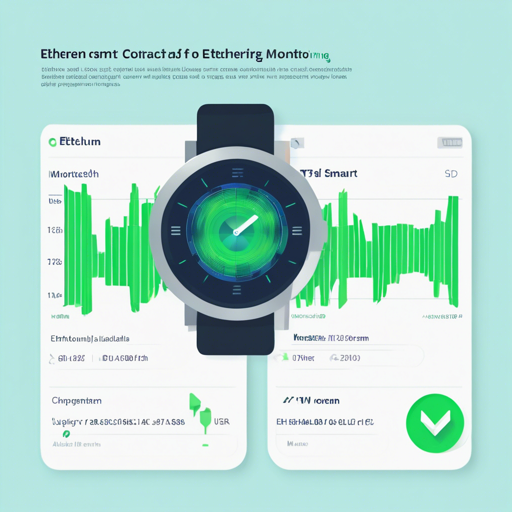Welcome to your guide on using Smart Contract Watch, a powerful tool designed to monitor Ethereum smart contract activity and provide insights into transaction processes. Whether you’re a developer or an enthusiast, understanding this tool will enable you to delve into the workings of the Ethereum blockchain effectively. Let’s dive in!
What is Smart Contract Watch?
Smart Contract Watch is a monitoring tool that allows users to track activities related to specific smart contracts on the Ethereum blockchain. By sending JSON RPC requests to an Ethereum node, it helps in providing a clear picture of transactions and events that occur in the blockchain. You can run it as a local blockchain explorer or using it for in-depth investigations, making it a versatile assistant in the world of Ethereum.
Setting Up Smart Contract Watch
To get started, you’ll need to have a functional Ethereum node, as Smart Contract Watch relies on this connection to function. Once your node is up and running, follow these steps:
Step 1: Clone the Repository
- Open your terminal and run the command:
git clone https://github.com/Neufund/smart-contract-watchStep 2: Install Dependencies
- Navigate into the cloned directory:
cd smart-contract-watchyarnStep 3: Start the Monitor
Run Smart Contract Watch with the necessary parameters. For example:
yarn start -f 4240705 -a 0x2c974b2d0ba1716e644c1fc59982a89ddd2ff724 -n http://localhost:8545 -l info -qUnderstanding Input Parameters
Smart Contract Watch accepts input parameters in three ways: command line arguments, environmental variables, and configuration files. Here’s a breakdown:
- Command Line: Specify parameters such as addresses, starting and ending block numbers, modes, and node URL directly when you run the tool.
- Environmental Variables: Define settings in a `.env` file whereby you can mix parameters for convenience.
- Configuration File: Use a `.watch.yml` file to outline your configurations, which can be combined with CLI inputs.
Modes of Operation
The tool runs in two modes:
- Default Mode: This is a thorough, albeit slower method that scans the blockchain block by block.
- Quick Mode: This faster method retrieves all needed information for a block with minimal RPC requests.
Example Use Case
Imagine trying to find every person attending a large event, but only having a guest list in a disorganized pile. You can either search meticulously one name at a time (Default Mode) or use a mobile application that quickly pulls up all relevant entries (Quick Mode). Similarly, Smart Contract Watch offers both detailed tracking and rapid scanning of blockchain activities.
Output Information
Smart Contract Watch provides insights on:
- Direct transactions involving monitored smart contracts.
- Log events generated by the smart contract for internal transactions.
Troubleshooting Tips
If you encounter any issues while using Smart Contract Watch, consider the following suggestions:
- Ensure that your Ethereum node is operational and accessible.
- Check the input parameters for accuracy.
- If using Quick Mode, confirm that it is enabled to improve efficiency.
- Review the log levels to understand the tool’s activity better.
For more insights, updates, or to collaborate on AI development projects, stay connected with fxis.ai.
Conclusion
At fxis.ai, we believe that such advancements are crucial for the future of AI, as they enable more comprehensive and effective solutions. Our team is continually exploring new methodologies to push the envelope in artificial intelligence, ensuring that our clients benefit from the latest technological innovations. Now you’re all set to monitor smart contracts effectively!

